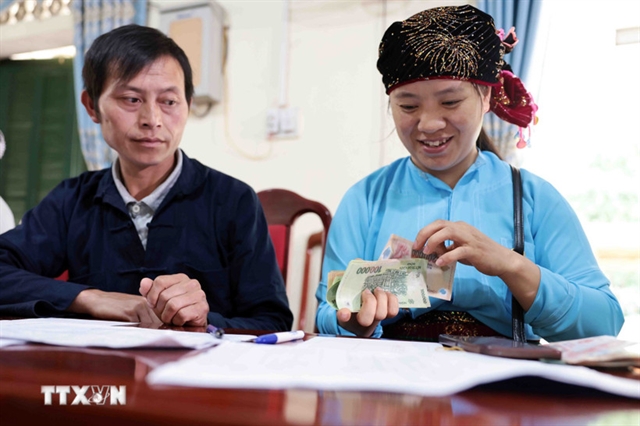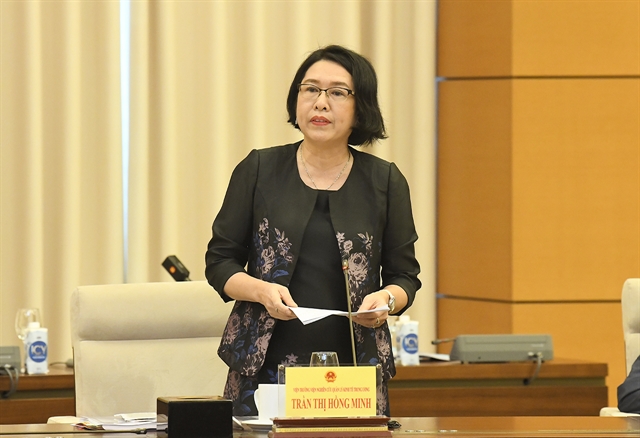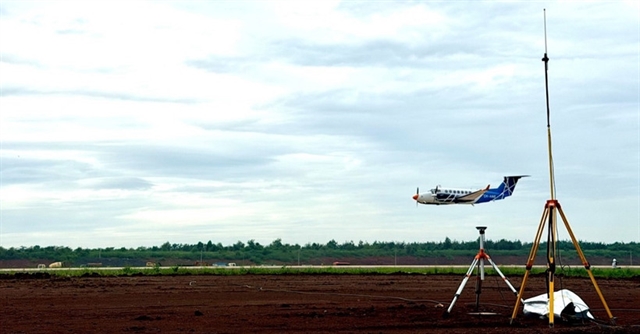 Opinion
Opinion


|
| Director of Central Institute for Economic Management under Ministry of Planning and Investment Trần Thị Hồng Minh. Photo quochoi.vn |
Director of the Central Institute for Economic Management under Ministry of Planning and Investment Trần Thị Hồng Minh talked to the Vietnam News Agency about the Economic Restructuring Plan for the 2021-2025 period which was approved at the 2nd session of the 15th National Assembly.
Why does Việt Nam need to implement an economic restructuring plan?
Economic restructuring is the process of reallocating resources for development on a national scale to improve and enhance the efficiency of resource use, labour productivity, quality, efficiency and competitiveness of the economy. The essence of the economic structure depends on the institutional and policy system. That is the process of upgrading the operating system of the economy so that resources can be mobilised, allocated and used more efficiently toward a more reasonable economic structure.
In the 2016-2020 period, the implementation of economic restructuring achieved many positive and important results, basically completing planned objectives. The quality of growth was improved, the economic structure shifted in the right direction and labour productivity was improved.
Besides the positive results, there were still some limitations.
Firstly, restructuring of three key areas - public investment efficiency, disbursement of public investment capital, and the equitisation and divestment of State capital in enterprises - failed to meet planned goals. The handling of weak credit institutions was still limited. State budget revenue was not sustainable. The private sector mostly included small and micro enterprises, with low competitiveness and operational efficiency.
Secondly, the world’s complicated developments in geopolitical competition, trade tensions, non-traditional security, climate change, and especially the COVID-19 pandemic posed many new challenges and opportunities for Việt Nam, making it urgent for the country to have orientations and solutions to restructure the economy.
In that complicated context, the Economic Restructuring Plan for the 2021-2025 period needs to be implemented with specific goals and more drastic solutions to support the recovery and development process in the 'new normal' situation.
The plan for the 2021-2025 period is not new, but a continuation and concretisation step associated with specific conditions of the next period.
The profound change in the world and domestically after the COVID-19 pandemic requires Việt Nam to accelerate the process of economic restructuring. If this is delayed or slowed down, it will be very difficult for us to narrow the development gap with the world, overcome the middle-income trap, effectively respond to climate change and take advantage of the new opportunities that the Fourth Industrial Revolution and international integration can bring.
What are the basic goals of the Economic Restructuring Plan?
By the end of 2025, Việt Nam will have a reasonable and effective structure in each industry and field.
The country is expected to develop many national products with new technology, creating a breakthrough in the competitiveness of key economic sectors. We also expect significant and substantive changes in the growth model, productivity, quality, efficiency, competitiveness, improvement of autonomy, adaptability and resilience of the economy.
The plan maps out seven groups of specific goals and targets. In addition to several updated targets of the previous planning period, the 2021-2025 plan adds indicators on the development of different types of markets, restructuring of the economic space, development of the digital economy and innovation.
Do you think the goals are quite ambitious? What measures are included in the plan to realise them?
The plan proposes five groups of tasks and specific solutions.
First, focus on completing the objectives of restructuring public investment, the State budget, the system of credit institutions and public units.
Second, develop different types of markets and improve the efficiency of resource allocation and use.
Third, develop the business force; promote the connections of businesses from all economic sectors; speeding up the innovation and development of collective economic and co-operatives.
Fourth, develop the urban economy, strengthen regional linkages, urban-rural linkages, and promote the role of key economic regions and big cities.
Fifth, restructure industries towards modernity, develop a green and sustainable economy, and maximise the potentials and advantages of Việt Nam’s economy.
Can you give more details about the restructuring of economic sectors and economic space?
Regarding the orientation of restructuring economic sectors, the plan maps out the restructuring so it goes together with the upgraded value chains of industries based on the applications of scientific and technological advances, innovation, digital transformation, green economy and resilience to climate change.
Regarding the orientation of restructuring the economic sector, the plan sets out the orientation for mobilising, allocating and effectively using all resources for development; in which internal resources are strategic, fundamental, long-term, decisive, closely combined with external resources are important and breakthrough.
To develop the force of Vietnamese enterprises, the plan points out the need for improving competitiveness, internal capacity and self-reliance of the economy, effectively exploiting international integration, strengthening the connection of the private sector with foreign-invested enterprises and state-owned enterprises.
Regarding the orientation for the development of the economic space, the plan focuses on regional linkages, and urban-rural linkages to take advantage of size and the strengths of regions and then increase spill over benefits. It is also necessary to boost the urban economy, enhance the role of innovation and creativity of centres and big cities as well as promote the leading role in renewing the growth models of key economic regions.
The plan identified specific tasks for ministries, branches and localities while promoting decentralisation together with strengthened assessments, inspections and supervision.
The plan is implemented in conjunction with the master plan for economic recovery after the COVID-19 pandemic.
Accordingly, the economic restructuring plan is divided into two phases:
The first phase from now to the end of 2022 will focus on perfecting institutions, preparing foundational conditions, and speeding up solutions to support the economic recovery process.
The second phase from 2023 to 2025 will see a strong and synchronised implementation of measures.
Leaders of all sectors and levels should not think about personal benefits or benefits for their localities only. Only with close co-operation among localities, regions and sectors, the economic restructuring can generate positive results to improve the quality, efficiency and competitiveness of the economy. — VNS




